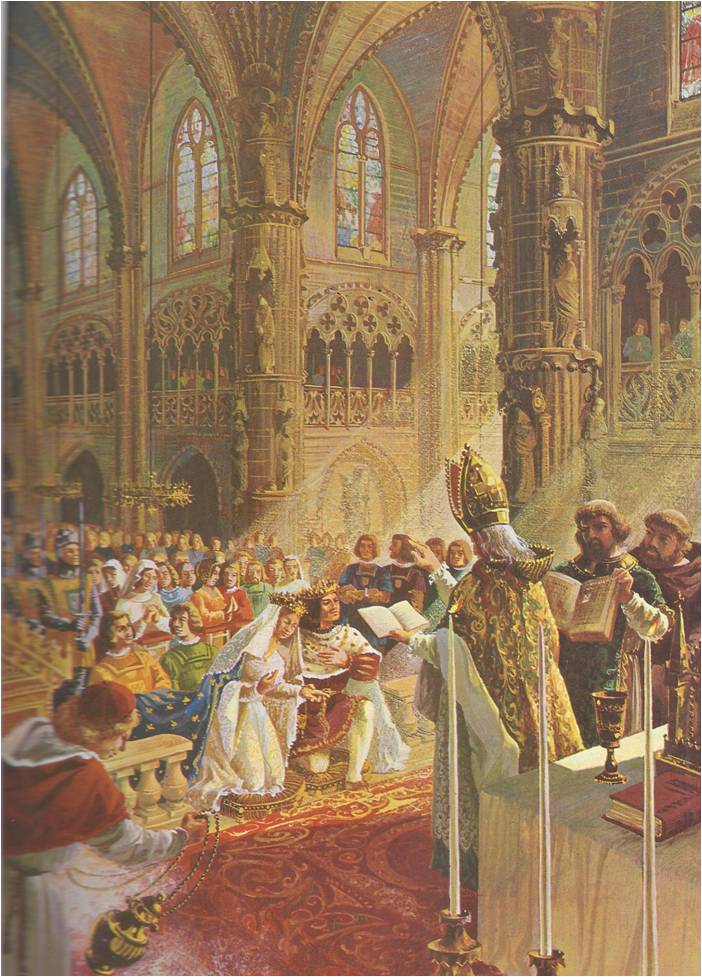THE END OF World War I brought many changes of government in Europe, but in a number of countries the old aristocrats and landowners still had power and the new governments could not solve the problems that faced them. Among these countries was Poland. A democratic form of government had been established, but conflicts between various parties and their leaders kept it from being very effective. General Joseph Pilsudski had helped to set up the new government of Poland. He retired from public office in 1922, when Poland adopted a democratic constitution. Pilsudski wanted a bigger and stronger Poland and he was dissatisfied with what the government was doing. In 1926 he led his armed followers on Warsaw, the nation’s capital and the tramp of marching men sounded in Poland, as it did in Italy and Germany. Within a few days, Pilsudski was in control of the government. Although from time to time he held various offices in the government, Pilsudski was really the dictator of Poland until his death in 1935. Shortly before he died, Pilsudski put through a new constitution. While it called for certain democratic procedures, such as the election of a parliament, it merely made official Pilsudski’s military dictatorship. Pilsudski’s place was taken by General Edward Smigly-Rydz, the inspector-general of the army. He ruled with the aid of a group of military men known as the “colonels.” Although Poland’s political organization was looser than that of Germany or Italy, its form of government was very close to fascism. Much the same thing was true in the countries of the Balkans — in Greece, Yugoslavia, Albania, Bulgaria and Rumania. During the 1920’s and early 1930’s Greece tried various forms of government. It was at times a monarchy, at times a dictatorship and at times a democratic republic. …
Read More »Ferdinand and Isabella Unite Spain 1469-1700
IT WAS Wednesday, October 18, 1469 and Princess Isabella of Castile and Prince Ferdinand of Aragon were being married. At the end of the beautiful ceremony, the two thousand guests cheered and the entire city of Valladolid began a week of celebration. Isabella was overjoyed, for she loved her husband and he loved her. They seemed well matched. Isabella was eighteen, tall, blonde and blue-eyed – “The handsomest lady I ever beheld‚” one nobleman said. Ferdinand was slightly shorter than his wife, but he was handsome. Isabella was intelligent, very religious and strong-willed. Ferdinand, too, was intelligent and he was extremely shrewd. The happy couple talked for long hours, went riding, played chess and their love grew. Isabella was glad to escape from the royal court of her brother, King Henry IV of Castile. Castile was the largest of the several kingdoms that made up Spain and under Henry IV it was probably the worst ruled. Isabella hated Henry’s court. The nobles were proud, ignorant and insolent; some were fierce warriors, the rest seemed lazy. Most of them taxed their peasants harshly, then spent the money on magnificent lace-trimmed clothes, on drinking and fighting. King Henry himself set a bad example. He was cruel, he loved to watch spectacles and fires, he let his guard of wild Moorish soldiers insult the young Spanish ladies. When their fathers complained, he told them they were insane and had them whipped in public. The nobles could get anything they wanted from Henry. Sometimes he gave them blank checks to take any sum they wished from Castile’s treasury. Henry was a weak king and became known as Henry the impotent. In the provinces, the nobles were even more unruly. Around Seville, the Duke of Medina-Sidonia and the hot-headed Marquis of Cadiz were at war, …
Read More »The Renaissance in the North and Spain 1400 – 1598
Through the bustling market-towns of the Low Countries passed the traders, goods and gold of all Europe. Here the luxuries of Asia — spices‚ silks, jewels and perfumes — were exchanged for the practical products of the North — woolen cloth and utensils of iron and copper and wood. In shops and inns, wily Italian shippers and bankers bargained with the solemn, solid merchants from Germany and Flanders — and made the profits that built the Renaissance cities of Italy. In tall-spired cathedrals, in palaces, guildhalls and universities, wandering Italian artists discovered works of art and scholarship as great as any they had known at home. The men of the North had needed no outsiders to teach them about money-making or magnificence. Long before the Renaissance spread across Europe from Italy, they had turned to business, formed the guilds, grown rich and invested their gold in displays of splendour. Flanders was the center of a great cloth-making industry. Germany was the home of expert craftsmen—armourers, goldsmiths and engravers. In Haarlem in the Low Countries, a jack-of-all-trades named Laurent Coster had first thought of using movable carved letters to form words and sentences from which pages could be printed. About 1440, Johann Gutenberg and his assistant Peter Schoeffer had put Coster’s idea to use, made the first printed books and brought about a revolution in learning that changed the history of the world. The northern artists also were inventive and their guildsman patrons kept them as busy as the artists of Italy. Of course, their tastes were not Italian and their paintings and statues, like their ideas, were very different from those in Florence, Milan and Rome. When Masaccio was first teaching the Florentines how to paint figures that “stood on their feet,” the wool merchants of Flanders were buying paintings …
Read More »


